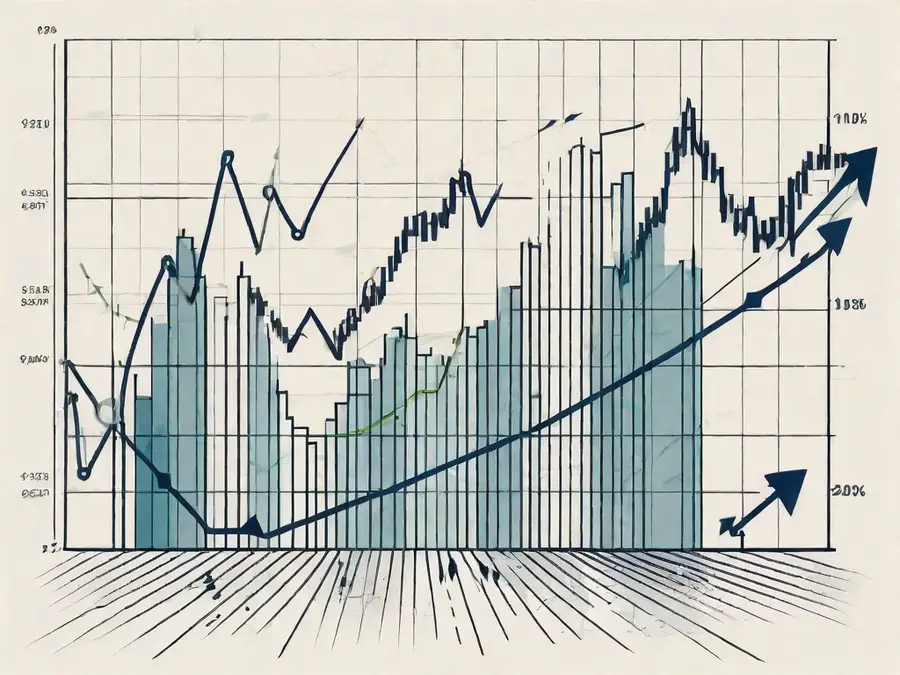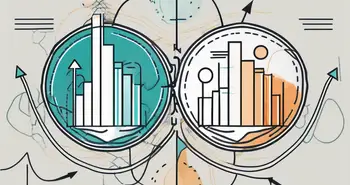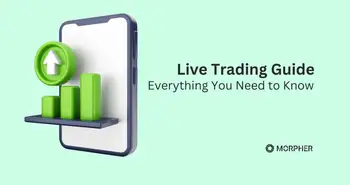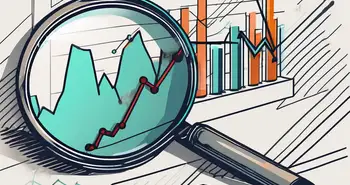The Ultimate Guide to Active Trade: Maximizing Profits and Minimizing Risks

Welcome to the ultimate guide to active trade! In this comprehensive article, I will take you through the ins and outs of active trading and equip you with the knowledge you need to maximize your profits while minimizing risks. Whether you're a beginner looking to dip your toes into the world of trading or a seasoned trader looking to fine-tune your strategies, this guide has got you covered. Let's dive right in, shall we?
Understanding Active Trading
Before we delve into the nitty-gritty details, let's first define what active trading entails. Active trading is a style of trading where traders actively buy and sell financial instruments within short time periods, typically minutes to hours. Unlike long-term investing, active trading focuses on exploiting short-term market movements to make quick profits.
Active trading is a dynamic and fast-paced approach to the financial markets. It requires traders to stay on top of market trends, news, and events that can impact prices. By closely monitoring the market, active traders aim to identify short-term opportunities and take advantage of them before they disappear.
Now that you have a basic understanding of active trading, let's explore the principles that underpin this trading style. The principles of active trading include constant market monitoring, utilizing technical and fundamental analysis techniques, and employing proper risk management strategies.
Constant market monitoring is a crucial aspect of active trading. Traders need to stay vigilant and keep a close eye on price movements, volume, and market indicators. By staying informed about market conditions, active traders can make informed decisions and react quickly to changes in the market.
Technical analysis is another key component of active trading. Traders use various technical indicators, such as moving averages, trend lines, and oscillators, to analyze price patterns and identify potential entry and exit points. By studying historical price data and chart patterns, active traders aim to predict future price movements and make profitable trades.
In addition to technical analysis, active traders also utilize fundamental analysis techniques. Fundamental analysis involves evaluating the financial health and performance of a company or an asset. By analyzing factors such as earnings reports, economic indicators, and industry trends, active traders can gain insights into the intrinsic value of an asset and make informed trading decisions.
Proper risk management is crucial in active trading. Due to the fast-paced nature of this trading style, the potential for losses can be higher compared to long-term investing. Active traders employ risk management strategies such as setting stop-loss orders, diversifying their portfolios, and using position sizing techniques to limit potential losses and protect their capital.
Active trading stands apart from other trading styles in its speed and intensity. While long-term investing requires a patient and long-term mindset, active trading demands quick decision-making and the ability to adapt to rapidly changing market conditions. By constantly monitoring the market and leveraging time-sensitive opportunities, active traders aim to capitalize on short-term price fluctuations.
Active trading can be an exciting and potentially rewarding approach to the financial markets. However, it requires dedication, discipline, and a deep understanding of market dynamics. By mastering the principles of active trading and continuously honing their skills, traders can strive to achieve consistent profits in the fast-paced world of active trading.
The Tools of the Trade
In order to succeed in active trading, it's crucial to have the right tools at your disposal. Let's explore some essential software for active trading.
Essential Software for Active Trading
One of the key tools for active trading is a reliable trading software. This software provides you with a user-friendly interface to execute trades quickly and efficiently. Look for software that offers advanced trading features, such as real-time market data, customizable charts, and order execution capabilities.
But trading software is just the tip of the iceberg when it comes to the tools you need as an active trader. To truly thrive in this fast-paced environment, you'll also need access to cutting-edge trading platforms.
Trading platforms are another important tool for active traders. These platforms not only allow you to place trades but also provide access to market analysis tools and technical indicators. Choose a trading platform that suits your trading style and offers the features you need to make informed trading decisions.
Imagine having a trading platform that offers a wide range of technical indicators, allowing you to analyze market trends and identify potential trading opportunities. With just a few clicks, you can overlay moving averages, Bollinger Bands, and other popular indicators on your charts, giving you a comprehensive view of the market.
But it doesn't stop there. Some trading platforms even offer advanced order types, such as stop-loss and take-profit orders, to help you manage your risk effectively. With these tools at your fingertips, you can set predefined exit points for your trades, ensuring that you don't miss out on potential profits or expose yourself to unnecessary losses.
In addition to trading software and platforms, real-time market data is crucial for active traders. Having up-to-date information on market prices, volume, and other relevant data will give you a competitive edge and help you make better trading decisions.
Imagine being able to see live market data streaming directly into your trading platform. You can monitor price movements in real-time, spot sudden spikes or drops, and react quickly to market events. This level of data transparency allows you to stay ahead of the curve and make informed trading decisions based on the latest market conditions.
But it's not just about the numbers. Some trading platforms also provide news feeds and economic calendars, keeping you informed about important events that could impact the markets. Whether it's an interest rate decision, a corporate earnings report, or a geopolitical development, having access to timely news and economic data can help you anticipate market movements and adjust your trading strategy accordingly.
So, as you can see, active trading requires more than just a basic trading software. To succeed in this competitive landscape, you need a comprehensive suite of tools that includes reliable trading software, feature-rich trading platforms, and real-time market data. By equipping yourself with these tools, you'll be well-prepared to navigate the dynamic world of active trading and seize profitable opportunities.
Strategies for Maximizing Profits
Now that you have a solid understanding of active trading and the tools you need, let's dive into some strategies for maximizing profits.
One strategy that active traders often employ is technical analysis. This approach involves studying historical price and volume data to identify patterns and trends. By analyzing charts and applying technical indicators, active traders can make predictions about future price movements and time their trades accordingly. For example, they may look for patterns such as double tops or bottoms, head and shoulders formations, or support and resistance levels. These patterns can provide valuable insights into potential price reversals or continuations, allowing traders to make informed decisions.
However, technical analysis is not the only strategy to consider. Fundamental analysis is another approach that active traders often utilize. This strategy involves evaluating the financial health and growth potential of a company or asset. By examining factors such as earnings reports, industry trends, and macroeconomic conditions, active traders can identify undervalued assets and make well-informed trading decisions. For instance, they may look for companies with strong balance sheets, consistent revenue growth, and competitive advantages in their respective industries. By understanding the underlying value of an asset, traders can better assess its potential for future price appreciation.
Timing the market is another critical aspect of active trading. Knowing when to buy and sell can greatly impact your profitability. Successful active traders study market trends, monitor relevant news, and utilize technical analysis tools to identify optimal entry and exit points. They may also consider factors such as market volatility, liquidity, and investor sentiment. For example, during periods of heightened volatility, traders may adopt a more cautious approach and tighten their stop-loss orders to protect their capital. On the other hand, during periods of low volatility, traders may seek out opportunities for short-term gains by employing strategies such as scalping or day trading.
It's important to note that active trading requires practice and experience. Developing a solid understanding of various trading strategies and honing your skills takes time. It's also crucial to continuously educate yourself and stay updated with the latest market developments. By staying informed and adapting your strategies as needed, you can increase your chances of maximizing profits as an active trader.
Minimizing Risks in Active Trading
While active trading offers the potential for high profits, it also carries inherent risks. Let's explore some risk management techniques to help you minimize potential losses.
Risk Management Techniques
One of the most effective risk management techniques in active trading is setting stop-loss orders. A stop-loss order is a predefined price level at which you automatically exit a trade to limit your losses. By setting stop-loss orders, you can protect yourself from significant losses during volatile market conditions.
Diversification is another crucial risk management strategy. By spreading your investments across different assets and sectors, you reduce the impact of any single investment's poor performance. Diversification helps mitigate the risks associated with specific companies or industries and provides a more balanced portfolio.
Now that we have covered the main points of active trading, let's address some frequently asked questions to further solidify your understanding.
FAQ
What is active trading?
Active trading is a style of trading where traders actively buy and sell financial instruments within short time periods, typically minutes to hours.
What are the essential tools for active trading?
Some essential tools for active trading include reliable trading software, trading platforms, and real-time market data.
What are some strategies for maximizing profits in active trading?
Strategies for maximizing profits in active trading include technical analysis, fundamental analysis, and timing the market.
How can I minimize risks in active trading?
To minimize risks in active trading, you can use risk management techniques such as setting stop-loss orders and diversifying your investments.
Now armed with this comprehensive guide, you are ready to embark on your active trading journey. Remember, successful active trading requires continuous learning, practice, and discipline. Stay informed, stay focused, and always manage your risks wisely. Happy trading!
As you consider the potential of stock trading and the broader cryptocurrency landscape, why not expand your investment horizon with Morpher? At Morpher.com, you can leverage the power of blockchain technology to trade across a multitude of asset classes, including cryptocurrencies, without the burden of fees or liquidity constraints. With the ability to engage in fractional investing, short selling, and up to 10x leverage, Morpher offers a unique and flexible trading experience that aligns perfectly with the innovative spirit of crypto mining. Take control of your investments with the safety of the Morpher Wallet and explore new market opportunities today. Sign Up and Get Your Free Sign Up Bonus to embark on a transformative trading journey with Morpher.

Disclaimer: All investments involve risk, and the past performance of a security, industry, sector, market, financial product, trading strategy, or individual’s trading does not guarantee future results or returns. Investors are fully responsible for any investment decisions they make. Such decisions should be based solely on an evaluation of their financial circumstances, investment objectives, risk tolerance, and liquidity needs. This post does not constitute investment advice.

Painless trading for everyone
Hundreds of markets all in one place - Apple, Bitcoin, Gold, Watches, NFTs, Sneakers and so much more.

Painless trading for everyone
Hundreds of markets all in one place - Apple, Bitcoin, Gold, Watches, NFTs, Sneakers and so much more.









